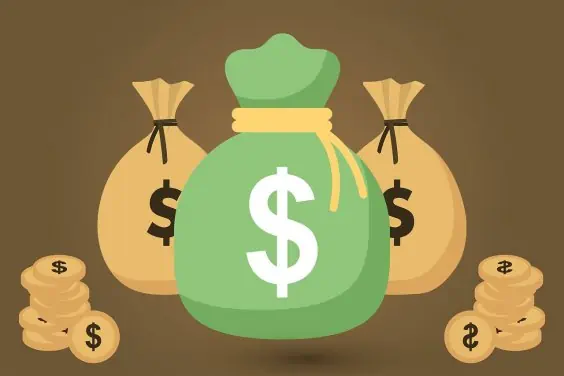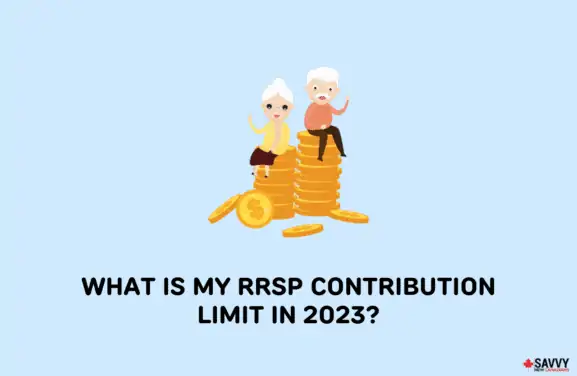The debate regarding TFSAs vs. RRSPs and which one is better has always been a hot topic.
Although both are considered excellent savings and investing accounts, sometimes, individuals would like to make a distinction between the two plans so they can choose one that best suits their financial realities.
TFSA vs RRSP: Similarities and Differences
| Similarities | TFSA | RRSP |
| 1. Carry forward unused contribution room | You can carry unused contribution room forward indefinitely | You can carry unused contribution room forward until the year in which you turn 71 |
| 2. Over-contribution penalty | Excess contributions are subject to a 1% tax per month until removed | Up to $2000 is allowed in lifetime excess contributions. After that, a 1% tax per month is levied |
| 3. Withdrawal | Can withdraw funds at any time | Can withdraw funds at any time but may be subject to taxes |
| 4. Contribution to a spousal account | Yes | Yes |
| 5. Taxation of earnings | Investment income is not taxed | Tax is deferred until withdrawal |
| 6. Number of Accounts | There is no limit to the number of TFSA accounts you can open if you have a contribution room | There is no limit to the number of RRSP accounts you can open if you have a contribution room |
| 7. Type of Investments | Can hold various types of investment assets | Can hold various types of investment assets |
| Differences | TFSA | RRSP |
| 1. Contribution limit | Annual contribution limit ($6,500 for 2023) plus withdrawal in previous years plus contribution room carried forward | 18% of the previous year’s earned income up to a maximum ($30,780 for 2023), less pension adjustments, plus unused contribution room carried forward |
| 2. Funds that can be contributed | Funds from any source can be contributed | Only earned income can be contributed |
| 3. Effect on Income-tested benefits | TFSA withdrawals do not affect federal income-tested benefits and credits, e.g. OAS, CCB | Withdrawals are considered income and may impact eligibility for government benefits |
| 4. Tax-deductible contributions | Contributions are not tax-deductible | Contributions are tax-deductible |
| 5. Maximum age limit | No maximum age limit for contribution | The maximum age limit for contributions is 71 years |
| 6. Withdrawals | Tax-free | Taxable |
| 7. Re-contribution of withdrawals | Withdrawals can be re-contributed in subsequent years | Not allowed, except when related to HBP or LLP |
In previous articles, I discussed the basics of the TFSA and summarized how the RRSP works. To put things into perspective in my take on the TFSA vs RRSP debate, let us summarize the characteristics of both plans.
Tax-Free Savings Account (TFSA)
Here is what the TFSA entails:
- You can contribute if you are at least 18 years old and a Canadian resident.
- The Federal government sets annual contribution limits, and the contribution limit is indexed to inflation each year. For 2023, the limit is $6,500 (it was $6,000 in 2022).
- You can carry your contribution room forward from one year to another. If you have never contributed to a TFSA, your total contribution room in 2023 will be $88,000.
- You can invest in almost anything through your TFSA, including mutual funds, stocks, GICs, bonds, etc.
- Investment income earned is tax-free.
- You can withdraw funds from your TFSA at any time without tax implications.
- Withdrawals from your TFSA can be contributed back the following calendar year or later and will increase your total contribution room.
Registered Retirement Savings Plan (RRSP)
- You can contribute up to 18% of your earned income, less any pension adjustments, up to the specified maximum limit for the year. For 2023, the maximum limit is $30,780. It was $29,210 in 2022.
- You contribute pre-tax income and will get a tax refund when you file your tax return.
- Unused RRSP contribution room can be carried forward from one year to the next without penalty.
- There are different types of RRSP accounts, including individual RRSPs, group RRSPs, and spousal RRSPs.
- You will pay taxes on withdrawals from the RRSP except for purposes under the Home Buyer’s Plan and Lifelong Learning Plans.
Related: A Complete Guide To Retirement Income in Canada.
TFSA or RRSP: The Dynamics
When choosing between the TFSA or RRSP, many factors come into play. These include:
- What is your income tax bracket now?
- What will your income tax bracket be in retirement?
- What is the time horizon you have for retirement investing?
- How much do you need for retirement, and how much funds are you investing?
- Do you have an employer contribution-matching plan?
When a TFSA Beats an RRSP
1. Earning a Low Income: If you are entering the workforce and are earning a low income (<$40,000), a TFSA may be preferable. You can maximize your TFSA now while carrying your RRSP contribution room forward to future years when your marginal tax is higher, and you will get more in tax refunds.
If earning a low income, or are close to retirement, and expect to qualify for the Guaranteed Income Supplement (GIS), the TFSA is preferable. This is because eligible GIS benefits decrease by $1 for every $2 additional income above the maximum threshold.
If RRSP and other taxable income are high enough (more than $81,761 for the July 2022 to June 2023 payment period), there may also be a clawback of the Old Age Security (OAS) pension. However, TFSA income does not count toward taxable income.
2. No Income: Funds contributed to a TFSA can come from any source. This means you can use the TFSA to start investing tax-free even if you are not working. RRSP contributions are tied to earned income.
3. High Tax Bracket in Retirement: Utilizing all your TFSA room is a good strategy if you expect to be in a high tax bracket in retirement. This will help to shield some of your retirement income from taxes.
For those with significant pension plans, maximizing their TFSA may also reduce the clawbacks of OAS by the government.
4. Short-Term Savings or Investing Goals: TFSAs are an excellent saving tool for short to medium-term goals such as a car purchase, emergency funds, travel, etc. You can withdraw the money quickly without tax implications.
5. Investing after 71: Seniors can continue to contribute to a TFSA indefinitely, irrespective of their age. In contrast, RRSPs must be terminated and cashed out or converted to an RRIF.
6. RRSP Maxed Out: If you have already used up all your RRSP contribution room, the TFSA offers an additional opportunity to do more tax-free investing.
Related: Group RRSPs – Don’t Leave Money on the Table
When an RRSP Beats the TFSA
1. Contribution Limit: An RRSP gives you more room to save for retirement than a TFSA. For example, in 2023, an RRSP gives you a maximum contribution of $30,780, while a TFSA provides only a $6,500 contribution room.
To meet your retirement goals, you may also need to maximize your RRSP.
2. Retirement Friendly: The RRSP was designed for retirement savings. It is difficult to access funds within your RRSP account without incurring severe tax implications.
This may be a good thing as it is an incentive to be disciplined with retirement savings. In contrast, funds within a TFSA can be easily accessed without penalty and squandered.
3. Group RRSPs: RRSPs are even more attractive if you have an employer matching your contributions. Regardless of your tax bracket, if your employer offers you “free money,” contributing your maximum to a group RRSP is a sound investment strategy.
4. Home Buyers’ and Lifelong Learning Plans: RRSPs offer other benefits to first-time homebuyers or those planning for further education.
You can withdraw up to $35,000 from your RRSP to purchase a home or up to $20,000 to pay for full-time education. You have to pay back the amount in future years.
Related: The Home Buyers and Lifelong Learning Plans
TFSA vs RRSP: Which is Better?
The TFSA and RRSP both offer excellent tax-saving investment opportunities.
While the RRSP remains a staple in retirement savings plans, the TFSA offers interesting savings strategies to high and low-income earners, seniors nearing retirement, and those without an income.
Depending on your circumstances, one or both plans would suit your needs. It is important to carefully assess your current and future financial situation before deciding on the best approach.
The approach that works for me is to utilize both plans concurrently. I contribute as much as possible to my RRSP, and when I get the tax refund, I put some or all of the refund into my TFSA.




Can the funds invested in a TSFA be transferred to a spousal TSFA upon death and remain tax free even If the surviving member has a TSFA at its full commitment.
Hi Roy.
Yes, the funds in a TFSA can be transferred to a spouse upon death and remain tax-free if the surviving spouse was designated as “successor holder” by the spouse that died. In this case, the surviving spouse acquires all rights to the TFSA and any income earned on the funds (before or after death) is not taxable.
If the surviving spouse was not named a “successor holder”, but is a beneficiary to the TFSA by way of the will, for example, they will be required to pay taxes only on the income earned from the day of death till when the estate is settled.
In both cases however, the survivor can add the TFSA investment they are inheriting to their own TFSA account without requiring any contribution room.
Can you transfer some RESP to your TSFA in-kind if you have TSFA contribution room? If so, which part of the RESP can be transfered? Interest earned? Both brokerage accounts are with the same financial institution so there is no problem about having the same investment.
@Eugenie: No. The RESP transfers that are possible are discussed in the article link below:
https://www.savvynewcanadians.com/resp-child-decides-not-pursue-higher-education/